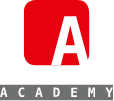Abstract
Objectives: Vaginal relaxation syndrome (VRS) comprises vaginal laxity and stress urinary incontinence (SUI). Laser vaginal tightening (LVT) therapy using a fractional erbium:yttrium aluminum garnet (Er:YAG) 2.940 nm laser may represent a nonsurgical option for both complaints. This study evaluates the effectiveness and side effects of fractional Er:YAG laser therapy in VRS patients. The improvement in VRS was evaluated.
Materials and methods: This is a retrospective study analyzing the medical records of patients treated with fractional Er:YAG laser therapy in our private clinic in Surabaya, Indonesia. Objective questions were asked to rate patients' satisfaction with the results of the therapy, namely dissatisfaction, and mild, moderate, or strong satisfaction. Statistical analysis used, data were input into tables in Microsoft Excel.
Results: Twenty-four VRS patients (54% with vaginal laxity, 33% with SUI, and 13% with vaginal laxity and SUI) were studied. Most of the patients were 36-45-year-old and had 2 children, and 79% of the patients had had a vaginal delivery. After 3 LVTs, mild satisfaction was observed in 15% of patients, moderate satisfaction was noted in 54% of patients, and high satisfaction was noted in 31% of patients. Among 11 patients with SUI, 36% recovered after the first LVT, and 100% recovered after the second LVT therapy. One patient experienced mild fluor albus as a side effect.
Conclusion: LVT therapy with a fractional Er:YAG laser was determined to be effective and safe as a treatment for VRS.
Keywords: Erbium:yttrium aluminum garnet fractional laser; stress urinary incontinence; vaginal laxity; vaginal relaxation syndrome.


